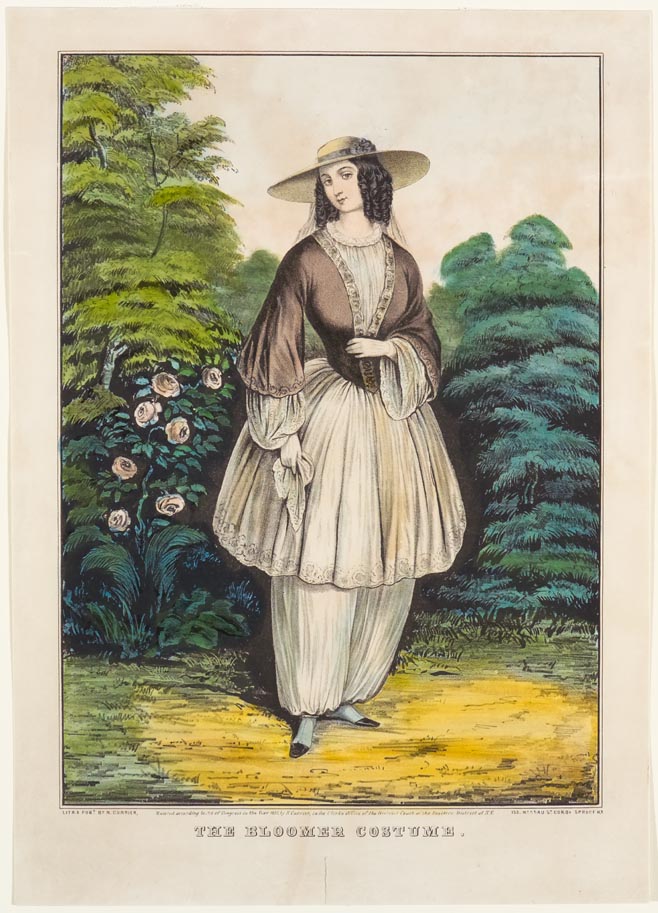Woman at center in a wooded area, she’s wearing a brown jacket, and white bloomer style outfit underneath. Rosebush behind to left.
Currier & Ives occasionally poked fun at female fashion in their images. In the 1850s and 1860s, women began to participate in more outdoor activities and their long dresses, which dragged on the ground, were shortened to create a “walking costume.” The excess material was gathered and puffed up around the hips, leading to the bustle. Currier & Ives also satirized the dress produced by the women’s rights movement. In 1851, The Bloomer Costume, was introduced by Elizabeth Smith Miller (the daughter of Congressman Gerrit Smith of New York) as a “symbol of the suffrage movement.” Women reformers felt that this outfit was another step toward freedom. The costume consisted of a knee-length dress worn over full pantalettes that were buttoned at the ankles. The idea of trousers for women, as well as other changes in women’s clothing, was publicized by Amelia Jenks Bloomer, editor of the feminist newspaper, The Lily. Because of the editor’s strong advocacy, Miller’s outfit became known as the “bloomer,” and the movement as “Bloomerism.” The bloomer endured several years of notoriety and ridicule before vanishing in the mid-1850s. Heigh ho! In rain or snow, the bloomer now is all the go! Twenty tailors take the stitches! Twenty women wear the breeches! Heigh ho! In rain or snow, the bloomer now is all the go!




